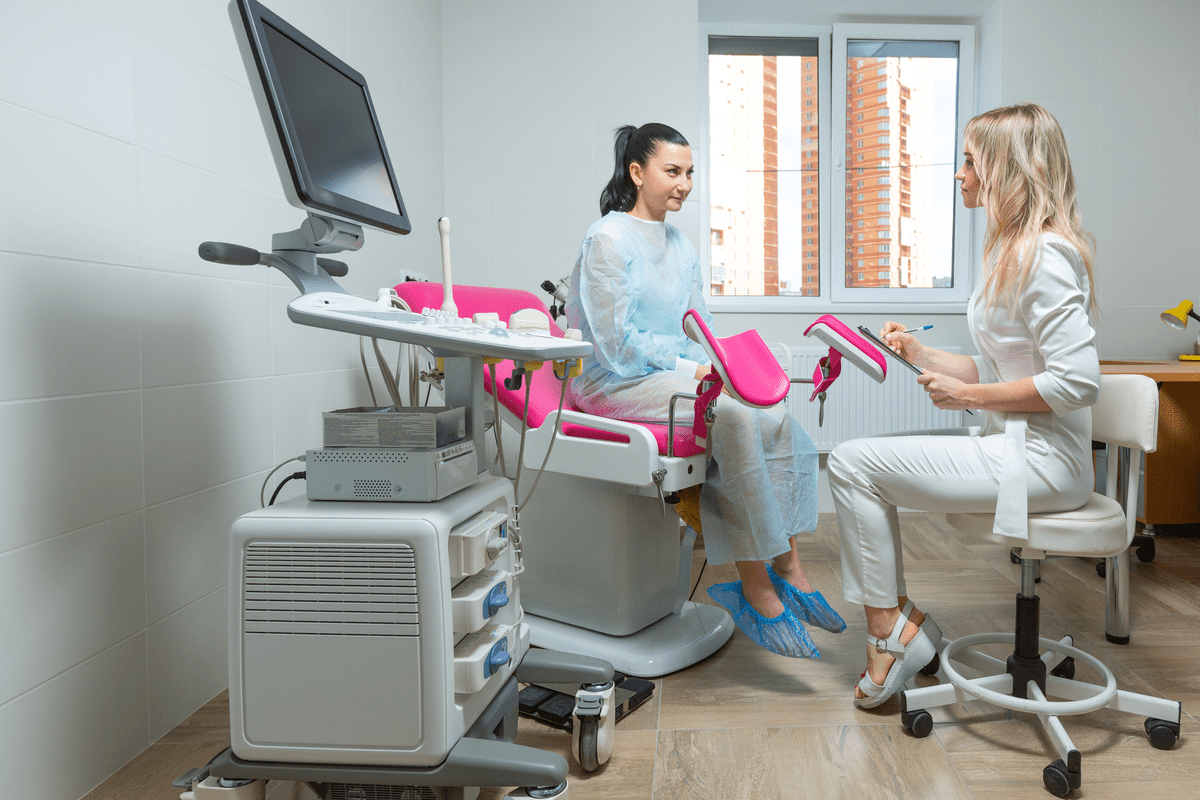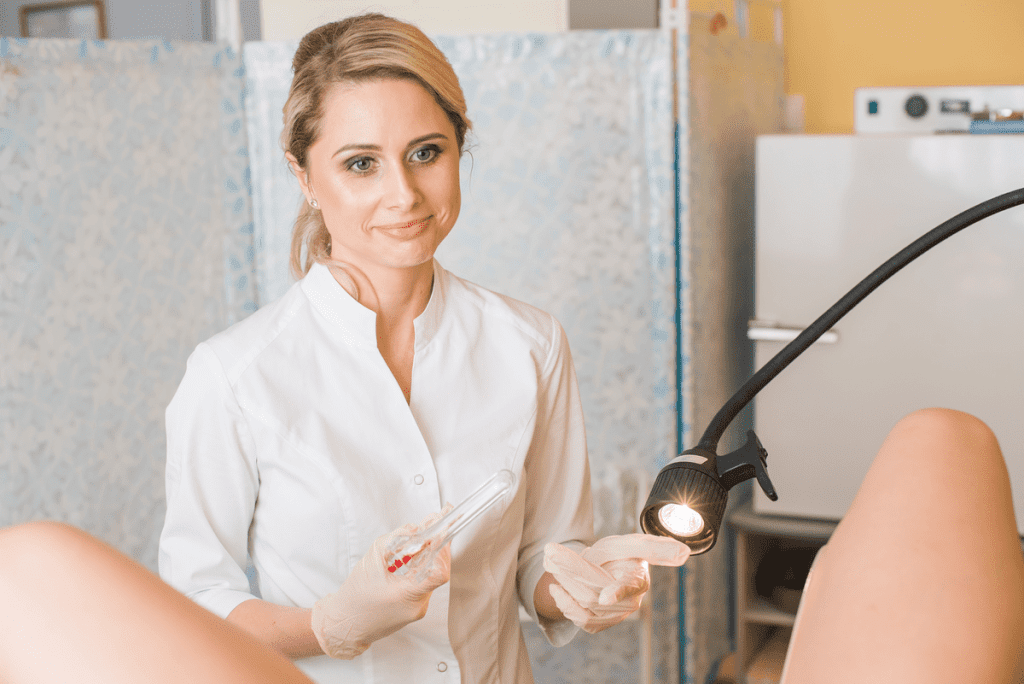
‘TIGHT’ VAGINAL MEANING
A “tight” vagina may indicate a more serious problem if it causes pain during penetration.
When you’re aroused, your vaginal muscles loosen up on their own. You can’t expect your vagina to self-lubricate and stretch if you aren’t in the mood for or physically able to engage in sexual activity.
If your vaginal muscles are tight, you may find that sex is uncomfortable or even impossible. Another possible symptom of vaginismus is extreme vaginal tightness. This is a physical issue that can be treated.
Discomfort in the vaginal region prior to or during penetration is known as vaginismus. This includes a wide variety of activities, including sexual contact, tampon use, and pelvic examination with a speculum.
Make an appointment with your gynecologist if any of this sounds familiar. They are trained to evaluate your symptoms and aid in a diagnosis.
THE FEMALE GENITALIA EVOLUTION
The One and Only Verified Reference Vaginal elasticity can be impacted by both getting older and having children. Your vagina will retain its elasticity regardless of how often you engage in sexual activity.
Your vagina may gradually loosen as a natural consequence of age and childbirth. Vaginal muscle atrophy is more common in women who have given birth vaginally multiple times. However, vaginal stretching can occur naturally with age, regardless of whether or not you have children.
Age
In your forties, you might notice a difference in the elasticity of your vagina, according to a trusted source. This is due to the fact that as you enter perimenopause, your estrogen levels will start to decrease.
If your estrogen levels drop, you can expect your vaginal tissue to:
- Thinner
- Drier
- Low in acidity
- Rigid and not easily stretched
- When you reach full menopause, you may find that these symptoms are more pronounced.
Childbirth
After giving birth vaginally, it’s normal for there to be some changes. After all, the baby has to be able to fit through the birth canal and exit the vagina, so the vaginal muscles stretch.
Your vagina may feel slightly more relaxed than usual after giving birth. Indeed, that is typical. A few days after giving birth, your vagina should begin to snap back, though it may not return to its pre-pregnancy shape entirely.
If you have given birth more than once, your vaginal muscles may have lost some of their elasticity. How to tighten your virginia exercises has a procedure before, during, and after pregnancy to strengthen your vaginal floor muscles if the thought of this makes you uncomfortable.
THE BEST WAYS TO WORK ON YOUR PELVIC FLOOR STRENGTH
Performing pelvic floor exercises is a great way to gain muscle strength in that area. Strength in these abdominal muscles is essential for maintaining The Most Dependable Place to Get Your:
- Bladder
- Rectum
- Intestines
- Uterus
The loss of strength in your pelvic floor muscles, whether from age or childbirth, can lead to a number of uncomfortable symptoms:
- Inadvertently pass gas or urine
- Continually have the urge to urinate
- Suffer from pelvic pain
- Be in agony during sexual activity
In women with severe urinary leakage, pelvic floor exercises may not be as effective as those for mild incontinence. If you’re searching for vaginal rejuvenation near me on Google, the best treatment plan is the one that you and your Nexus doctor create together.
EXERCISES
Want to learn how to strengthen your pelvic floor muscles? You can try out these exercises:
Perform Kegels
You should start by figuring out which muscles make up your pelvic floor. It’s best to do this while you’re in the middle of urinating. If you are successful, it means you have identified the appropriate muscle groups.
After that, proceed as follows:
You should select a workout posture. When performing Kegels, most people favor lying on their back.
Contract your abdominal and pelvic muscles. Maintain the tensed position for five seconds before releasing.
At least five times in a row, you should perform this action.
Raise the time to 10 seconds as you get stronger. Maintain a relaxed body while performing Kegels; avoid tensing the thighs, stomach, and butt. Remember to brace your pelvic floor muscles.
Pilates on the Pelvic Tilt
Performing a pelvic tilt exercise will help you strengthen your vaginal muscles by:
Lean against the wall with your shoulders and buttocks. Don’t lock your knees; keep them soft.
The belly button should be drawn in toward the spine. When doing this, you should lean against the wall with your back completely flat.
Hold for four seconds, then relax your abdominal muscles.
Try to do it multiple times a day.
Conical cervixes
The use of a vaginal cone is another method for exercising the pelvic floor. Something like a tampon in size, but heavier, to be held in the vagina.
That is to say:
Put the smallest cone in your genitalia.
Tighten your muscles. To maximize its effectiveness, you should maintain this position for a total of 30 minutes twice daily.
As you get better at keeping the cone in place in your vagina, you can use heavier cones.
Urinary incontinence after giving birth is a common problem that may be helped by using a vaginal cone. Unfortunately, more study is required.
Stimulation of nerve impulses to stimulate muscle (NMES)
By passing an electric current through the pelvic floor with a probe, NMES can help you build up your vaginal muscles. Your pelvic floor muscles will tighten and relax as a result of the electrical stimulation.
Either a doctor or someone using a home NMES unit can administer the therapy.

VAGINAL TIGHTENING COST
Vaginal rejuvenation laser cost from RM 315 to RM 4500 depending on the laser to be used.

TAKEAWAY
Don’t believe the hype about a “loose” vagina. Natural vaginal tightening decreases with age and childbirth, but the vaginal muscles do not stretch out irreversibly. The shape of your vagina will return to normal over time.
Talk to your healthcare provider if you notice any changes in your vagina that are causing you concern. They will be able to put your mind at ease and suggest ways forward.






